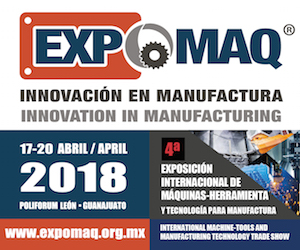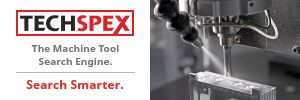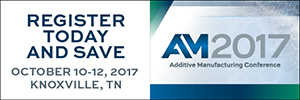Related:
Automotive Design
There is a concept known as “dominant design,” which has it that there is a standard—de facto if not de jure—that people within a given industry follow. For example, consider PCs. No matter what form factor the computer takes (desktop, notebook, subnotebook), no matter whether it has as innovative a shape and material of an iMac, no matter whether it has a battery that will let it run for hours on end, you can be sure of one thing: it will have a QWERTY keyboard. To be sure, there have been alternative keyboards designed (with QWERTY having been developed in response to the mechanisms of early typewriters: if someone were to type too fast, the keys would get jammed; QWERTY was a means by which the typist’s fingers would be sufficiently slowed).
Dominant designs don’t always remain dominant, however. The last time that you called an airline or the like and got the “automated” system, you were undoubtedly told, “If you don’t have a touch-tone phone, please stay on the line”. To be sure, dials and telephones were like new music releases and 45s. Nowadays, it is difficult to find one or the other.
In the auto industry, internal combustion engines (ICEs) are an example of a dominant design. The industry has been perfecting them for some 120 years. Spark ignition. Compression ignition. Either version, it is all about thermal reactions: explode the fuel and go.
Dominant designs tend to have very entrenched supporters: After all, there are intellectual and physical infrastructures that are built around them. The emerging technology tends to be more expensive—at least initially—and it is, well, different, and that’s not readily accepted.
However, sometimes there are new developments that become so compelling for one reason or another, that those who tend to hang on to the old versions tend to be ultimately in deep trouble: think only of the companies that used to produce carburetors. Outside of a used car lot, you are not going to pick up a car with one of those.
There is plenty of work on-going at all of the auto companies on alternatives to ICEs. The money invested by them is measured in the billions of dollars (Juergen Schrempp, chairman of the DCX Board of Management, announced in June that the company plans to invest approximately $1-billion in the development of fuel cells between now and 2004—and realize that the Partnership for a New Generation of Vehicles (PNGV), the cooperative program between the Big Three and the U.S. government, has been operating since 1993 and has spent something on the order of $2-billion). Yet the people who are involved in these programs seem to be on the outskirts of the real developments within the organizations. Which is understandable, in many ways. For one thing, they are going up against the dominant design, the dominant paradigm (yes, this is a useful application of that term) that exists within auto companies, where it is better to improve on the past than to invent the future. Second, there is a question as to whether anyone really wants the products, anyway, and so there is an emphasis on sustaining the core business rather than on doing something that may or may not pay off in the long run.
The Chevrolet Triax concept could be equipped with: all-wheel-drive electric, all-wheel-drive hybrid electric, or two-wheel drive internal combustion. An objective in the vehicle’s development was to address different market needs, not just those of the U.S. As Robert C. Purcell of GM Advanced Technology Vehicles explains, “The focus in Europe is on carbon dioxide emissions and fuel economy, so you need a clean and efficient internal combustion engine. For Japan, where there is high traffic density and a focus on fuel economy, the optimal solution might be a hybrid-electric. Finally, in places like California, where zero emissions vehicles are needed due to extreme environmental concerns, a fully electric vehicle may be required.” Expect the internal combustion engine to remain in play for the foreseeable future—but expect it to share the road with alternatives within the next decade. |
A Hefty Rebate
For example, at the end of May, a study commissioned by Toyota and General Motors regarding the market’s acceptance of electric vehicles (EVs) was released. The study was performed by University of California-Berkeley professor Dr. Kenneth Train and National Economic Research Associates. According to Dr. Train, consumers would accept an EV—if it was $28,000 less than a comparable ICE-equipped vehicle. He noted, “Since the average retail transaction price of an internal-combustion Toyota RAV4 is about $21,000, this would mean that in order to meet California’s EV mandate”—which has it that Toyota, based on the number of vehicles that it sells in the state, would be required to have 6,400 EVs on that state’s roads starting in 2003—”Toyota would have to give the average consumer a free RAV4EV plus a check for approximately $7,000.”
Not exactly the sort of thing any automaker—to say nothing of one that’s not widely known for providing rebates—would be interested in doing.
General Motors has been known to do plenty of things to move iron over the years. It is a pioneer in the commercial availability of an EV, its EV1, which it has been building since 1996. EV1s aren’t available for sale. They must be leased. Saturn, which is known for facilitating the consumer experience, is handling the EV1s for the corporation (the EV1 actually carries a “GM” badge). The popularity of EV1s is proving to be less than resounding; fewer than 1,000 units have been built for customers.
Of course, some customers are interested in having alternatives to traditional ICE-powered cars. Take the Honda Insight. This is a hybrid, one that has a gasoline engine (albeit a small one: three-cylinder, 1-liter) and an electric motor, powered by an nickel-metal hydride (NiMH) battery pack. This is not a pure EV. It isn’t plugged in. It is gassed up just like an Accord.
When the Insight went on sale in December 1999, Honda had anticipated moving 4,000 during calendar 2000. However, the company has upped the number to some 6,500.
Still, small potatoes.
Toyota is offering the Prius, which is also a gas/electric hybrid. Unlike the Insight coupe, it is a sedan. And it has a 1.5-liter, four-cylinder engine. It has 38 batteries packed together; they’re used in conjunction with a permanent magnet electric motor that has a peak horsepower rating of 44. Toyota is looking to sell 12,000 of the vehicles, which have a price of $19,995. Still, small potatoes.
Low Production.
Jim C. Cerano, program manager, Electric Vehicles, Minivan Platform Engineering, DaimlerChrysler, is proud that DCX’s Electric Powered Interurban Commuter (EPIC) minivan—which is essentially a Caravan/Voyager that is fitted with 28 12-volt NiMH modules and an AC induction motor that provides a peak 100 hp—was actually built on line at the DCX Windsor Assembly Plant, the plant where the ICE minivans are rolled out. One of the objectives was to prove high-production feasibility. “Yes,” Cerano says, “you can manufacture EVs on production assembly lines.” Comparatively speaking, he says, the manufacturing part is easy: the engineering and infrastructure challenges are hard.
How many did they build on line? Two hundred. (Potato chips?) And although Cerano admits that if more are manufactured, costs will come down for such things as the electric motor and the electronics. But there is a barrier, especially with regard to the motor: the copper used for the windings is expensive. “Even at high volumes it’s expensive.”
Thomas S. Moore, vice president, Liberty and Technical Affairs, Engineering Technologies, DCX, whose organization is charged with developing new, applied technologies, points out that when it comes to EVs and hybrids, from a manufacturing standpoint, the hybrids (e.g., DCX has developed a hybrid Durango; see AM&P, Jan. ’00, pp. 46-47, and a concept hybrid sedan, the ESX3, see AM&P, April ’00, pp. 24, 26) are comparatively straightforward: “minimal impact.” He notes that when it comes to EVs, there are more required connections, and connections are always a weak link in assembly.
Manufacturing is a tricky thing with regard to the non-ICE vehicles, if for no other reason than the fact that there has been such a long run with ICE products. Robert Culver, Policy and Business Strategy Manager, Partnership for a New Generation of Vehicles, Ford Research Laboratory, Ford Motor Co., points out that right now, fuel cells are hand-made today. He likens them, in effect, to jewelry. It must go from an artisan’s craft to mass production. Which is a challenge that all the auto companies are working on.
DCX’s 200 on-line EPIC minivans may represent less than three hours’ production of ICE minivans, but it is all about gaining experience. You have to start somewhere.
Making the Case.
Difficulties notwithstanding, the auto companies are moving forward on alternatives to ICE vehicles, if for no other reason than things like the aforementioned mandates in California, which are being copied by other states: It may just be that political and/or legal issues will be the main driver behind the engineering of alternatives. And there seems to be a non-trivial amount of belief that it will take something like tax credits to convince people that they want to invest in something that doesn’t take 94 octane. Culver says, “Ask someone informally about what they’d pay to have double the fuel economy that they’re getting. Most people will say that $1,000 is as much as they’d go. It’s tough to make a business case when these technologies are two to three times more expensive than what’s currently available. People will do newspaper recycling, but…” Even with the hundreds of millions of dollars that have been invested in development—both monies invested by private industry, as well as by governments—there is still plenty of work to do.
 |
| This is the Ballard Mark 900 fuel cell power module. It can transform methanol reformate or hydrogen into electrical power, which, in turn, can be used to operate motors that will, in turn, turn the wheels of a vehicle. |
Dr. Christopher Borroni-Bird, who recently joined GM as its director of Design and Vehicle Technology Interface, a man who helped drive forward fuel cell work at DCX, says that it will take “at least another 10 years” for there to be a hydrogen-fuel powered fuel cell on the road in any production volume. Although he admits that there has been, and continues to be, a great deal of work going on in developing fuel cells, he believes that there has been an insufficient amount of “real world testing” of fuel cells—he points out, for example, “people don’t want to test these things to destruction”—and that there are also infrastructure issues that have to be worked out, such as whether people will be able to pull up to the pump and load up on hydrogen. Still, Borroni-Bird says that fuel cells represent “a compelling vision to work on. Perhaps they won’t happen within the next few years, but there is such potential that we have to work on it.”
(Speaking on working on things: There must have been someone really working on Borroni-Bird’s title: director of Design and Vehicle Technology Interface. He explains that his position is to work between the people in Design and the people in Engineering, to help resolve the issues that arise between design trends and engineering requirements. He notes, “If GM wants to be a leader in styling, then there will be conflicts.” Conflicts vis-à -vis what the stylists want and what the engineers require. Borroni-Bird notes, for example, that in the case of fuel cell-powered vehicles, there are issues related to packaging: it may be possible to have modular fuel cell stacks such that they can be packaged throughout the vehicle, which would provide the possibility of enhanced styling. However, he goes on to point that there can be trade-offs with regard to things including thermal management: how would the radiator—or radiators—be sized and positioned for sufficient cooling. “My group will help resolve these conflicts.”)
From a standpoint of fuel cells as they currently are being produced, there are some fundamental issues that make them inherently expensive, like the use of platinum for the catalyst and the need to create precision channels in the plates between the anode and cathode in a proton exchange membrane fuel cell. (Although in the case of producing the plate, there may be a more efficient means to produce them, as equipment builders Ferromatik Milacron North America and Apex Plastic Technologies, along with materials supplier Premix/Quantum have recently announced the means by which thermoset injection can replace compression molding for producing bi-polar fuel cell plates. Quantum Composites, a division of Premix, has developed a material called Pemtex for the application; it was necessary to modify various aspects of the machine, mold, injection system, and the control in order to injection mold the pieces as required (i.e., dimensional precision; conductivity).)
Yet work on fuel cells is continuing with zeal at places including Ballard Power Systems in Canada (Ballard is the company that Ford and DCX is working with) and Massachusetts-based Giner Electrochemical Systems, a company established in May by Giner, Inc., and General Motors.
Ballard, for example, has developed its Mark 900 series fuel cell power module that is more powerful than its previous generation (one stack, not three, is required to generate 75 kW), the Mark 700, yet smaller (90 kg vs. 126 kg; 820 x 250 x 375 mm and 77 liters vs. 694 x 755 x 250 mm and 131 liters). Ballard is ramping up its production capabilities for the Mark 900.
A Different World.
Robert C. Purcell, executive director of GM Advanced Technology Vehicles, thinks that people ought to not think of a singular approach, a la what has been the case with ICEs: “We may end up with a marketplace with a number of technologies in the market at the same time.” What’s more, he points out that there are opportunities for new types of vehicles in emerging markets: “We are talking with people in India and China about battery-powered EVs as entry-level vehicles for personal use. There are a couple reasons they are interested.
“One is the environmental impact in cities: there are zero emissions at the tailpipe. The other is at the national policy level. If those countries go down the IC route, they would need significant oil imports for fuel. If they are able to power the private fleet with electricity—with sources they already have in the country, hydro, natural gas, coal—the battery powered EV may become sustainable.”
Purcell also points out that there is an advantage regarding EVs in Asia, given the considerable electronics manufacturing infrastructure that exists there: everything from motors to semiconductors. The U.S. has massive engine plants. They have large electronics plants. Vested interests being vested interests, it just may be that others are more amenable to EVs, etc.
Still, there is no question that there will undoubtedly be a change in the dominant design paradigm, that the ICE will give way—slowly, but surely—to alternatives. Ford’s Culver points out that it is necessary to keep on-going R&D into alternatives because “companies that can make the transition are the ones that will survive.”
And if you don’t believe that, just try and find someone who makes rotary telephone dialers.
It Happened One YearÂ
Although some may pooh-pooh the notion of dominant design having a significant effect on an industry, it is worth heeding the observations of James M. Utterback in his Mastering the Dynamics of Innovation (Harvard Business School Press). Utterback writes that “innovation is a central determinant of longer-run success and failure for manufacturing firms” and he points out, “most industry-shattering innovations do not spring from the established competitors in an industry but from new firms or from established firms entering a new arena.”
It is not necessarily that the existing firms are blind-sided in any way. Rather, the people within these organizations have a resistance to what is new, and rather than working on innovations, the propensity is to, Utterback points out, “further entrench their positions in the older products. This results in a surge of productivity and performance that may take the old technology to unheard-of heights. But in most cases this is a sign of impending death.”
There is something to be said for continuous improvement. But at some point, the improvement time is over.
Utterback provides an example of an industry-changing change that occurred in the auto industry: the introduction, in 1923, by Dodge of the all-steel, closed body automobile. Utterback admits that there is an inability to establish the direct causality of this design, which became the dominant one, on the exits and entries of firms into the auto industry, he does point out that in 1923, the number of firms that participated in the auto industry reached its peak at 75. In the two years following, “23 firms, nearly one-third of the industry, left or merged, and by 1930, 35 firms had exited.” Correlate that this the fact that “By 1925, fully half of U.S. auto production was all-steel, closed, body cars.” Which tracks fairly well with the departure of firms from the industry.
It happened before. Those who are convinced that IC engines will hold sway should consider Utterback’s observations.









